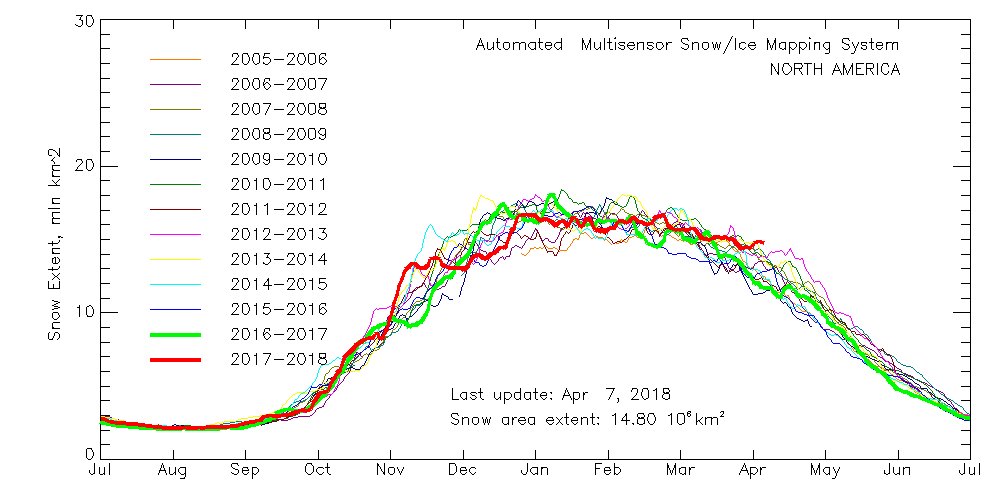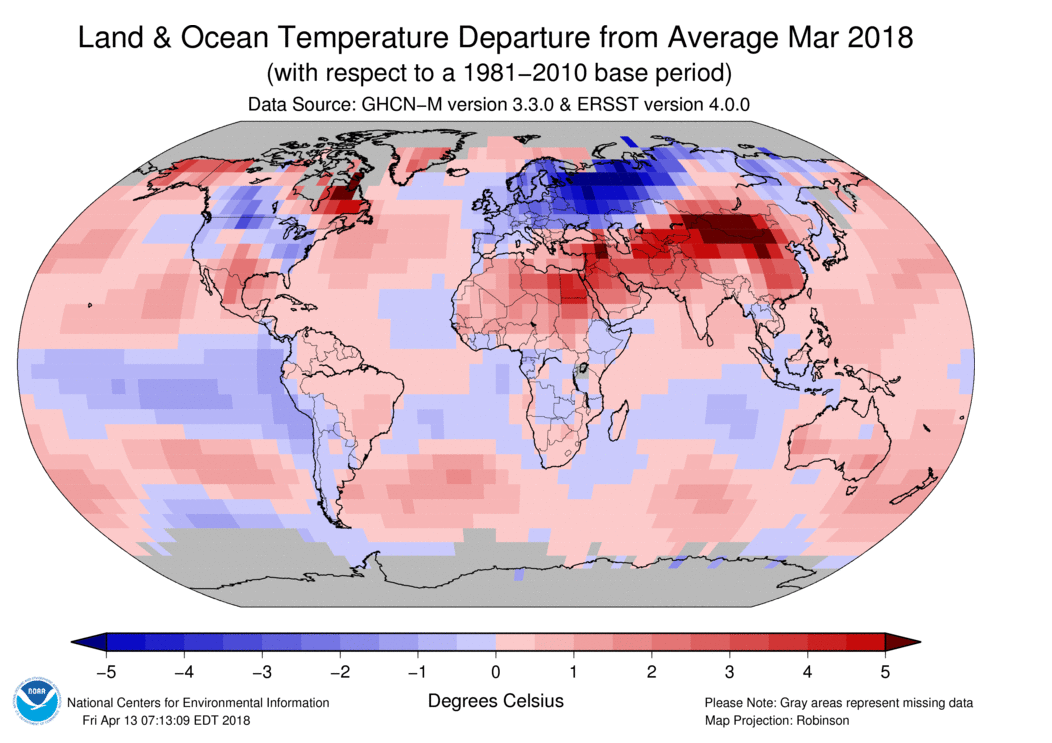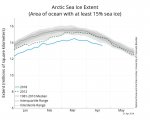More spring snow in Chicago, and forecasters call April's start among coldest in 130 years
Chicago Tribune
Chicago area residents may wake up to snow on the ground Thursday, the latest reminder that winter weather’s grip is delaying so many spring rites of passage, from Major League Baseball games to bridge-lifting season on the Chicago River downtown – the parade of boats heading for slips offering the surest sign of warm weather ahead.
And if those early morning walks to the bus or train stop weren’t convincing enough, forecasters say this is the second-coldest start to April across Chicago in 130 years.
Some 1-2 inches of snow were expected to fall by early Thursday, adding to the 2.7 inches already recorded at O’Hare International Airport in April, said Charles Mott, a meteorologist at the National Weather Service in Romeoville. That would mark the fifth time this month we’ve seen snowfall, according to forecasters.
“It is rare. … Getting anything an inch-plus is definitely rare this time of year,” Mott said.
Though next week is poised to bring dry weather and seasonal temperatures of about 50 degrees, it’s too early to predict whether Chicago has beaten winter yet.
The latest snow in Chicago happened on May 11, 1966, and the city had its latest snowfall of more than 1 inch on May 1, 1940, according to the weather service.
Snowy April weather
Snow in the Chicago area on Monday, April 16, 2018. (Jose M. Osoria/Chicago Tribune)
Predictions of more cold and snow Wednesday prompted the Cubs to postpone a home game against St. Louis until 1:20 p.m. Thursday. That was the 25th postponement in the first three weeks of the major league season, The Associated Press reported.
Earlier in the season, 2 inches of snow fell April 9, postponing the Cubs’ home opener.
Also Wednesday, the city of Chicago canceled what was meant to be the season’s first set of bridge lifts — allowing boat traffic to make its way down the Chicago River to area slips — because of the weather and a lack of participants, officials said. The first lift is scheduled for 8 a.m. Saturday at 8 a.m. and will continue every Wednesday and Saturday morning through June, weather permitting.
“Despite this spring’s colder than normal temperatures, Chicagoans look forward to the lifting of Chicago’s iconic movable river bridges,” Chicago Department of Transportation Commissioner Rebekah Scheinfeld said in a statement.
Although average high temperatures are above freezing, the mercury has frequently dipped below 32 degrees this month. When that happens, the city opens its six warming centers. Five of them are open from 9 a.m. to 5 p.m. on those days; a sixth center, at 10 S. Kedzie Ave., is open around the clock.
“Our policy doesn’t go by a date, it goes by the weather. Even though it’s April, if it’s below 32 degrees, we’re open,” said Cristina Villarreal, a spokeswoman for the city Department of Family & Support Services, which runs the shelters.
The first half of April marks the second-coldest start to the month since 1881, about when the weather service started keeping records, said Mott of the weather service.
The average temperature for April is 46.6 degrees, but this month is registering more than 10 degrees lower — at 36.2 degrees, the weather service said.
All winter, cold air from the north created a blanket that, at times, doesn’t seem to want to lift.
The cold wind and moisture blow into Canada from north of the Pacific Ocean and travels to the Great Lakes area, reinforcing the wintry conditions, Mott said.
“We are still getting cold air from Canada. They are still cold, and they are still snow-covered … that’s why we are still seeing cold from time to time,” Mott said. “We need this pattern to break, and until it breaks, we are susceptible to an inch-plus of snow.”
There is some relief in the future, though. The remainder of April is forecast to see average temperatures and dry weather.















